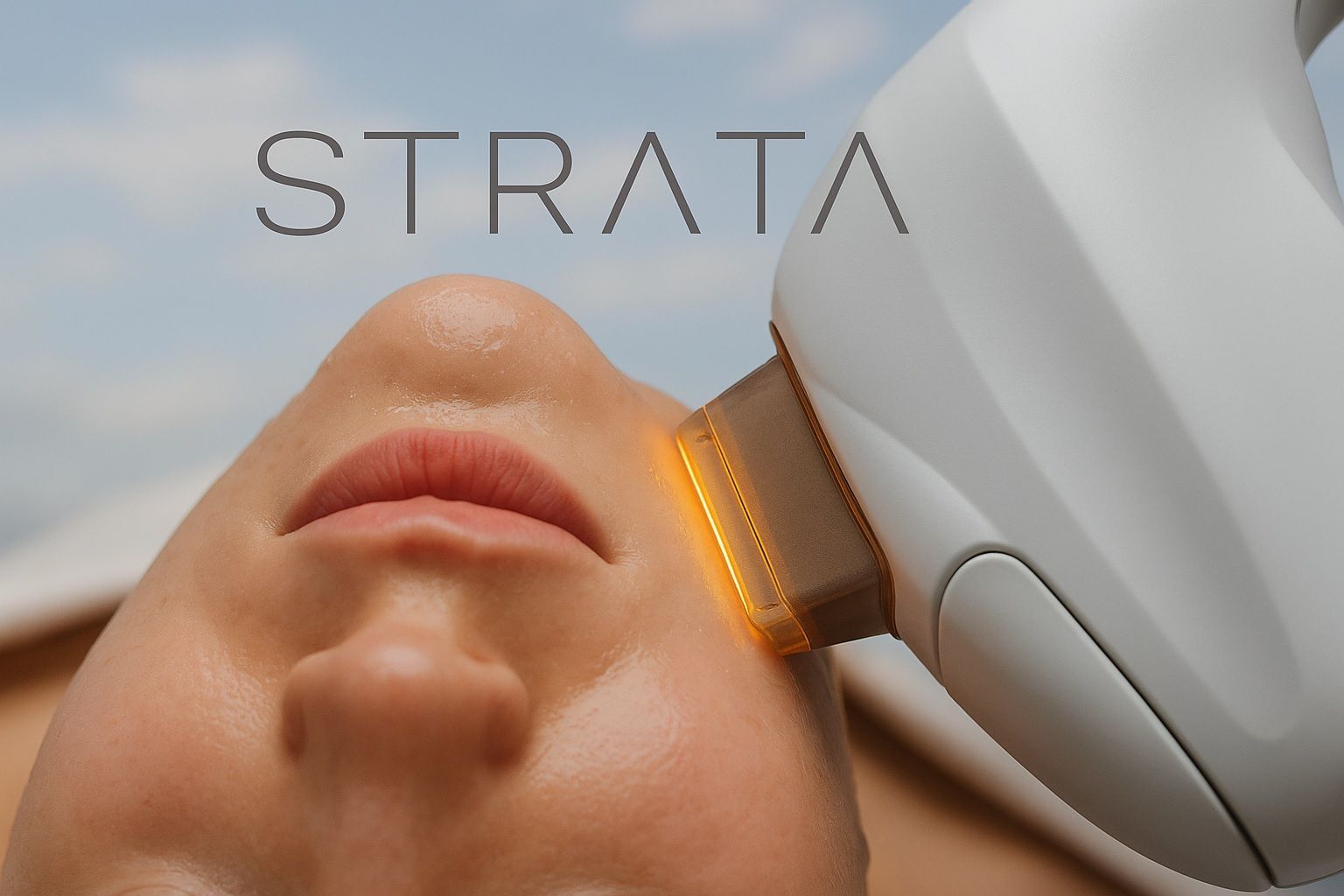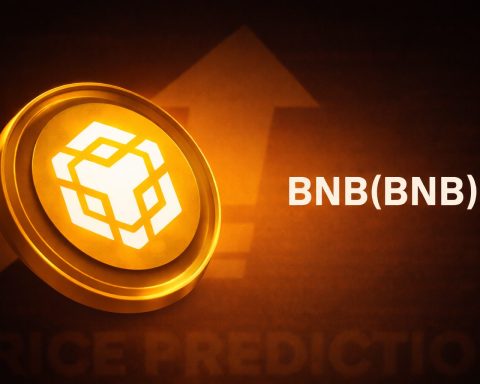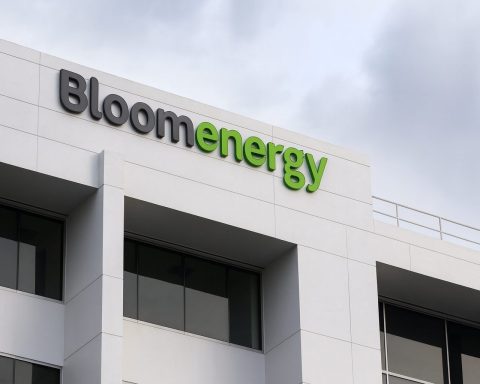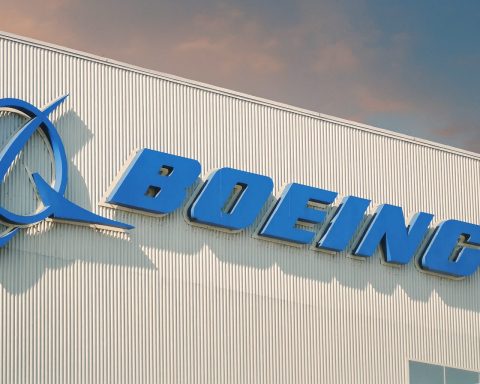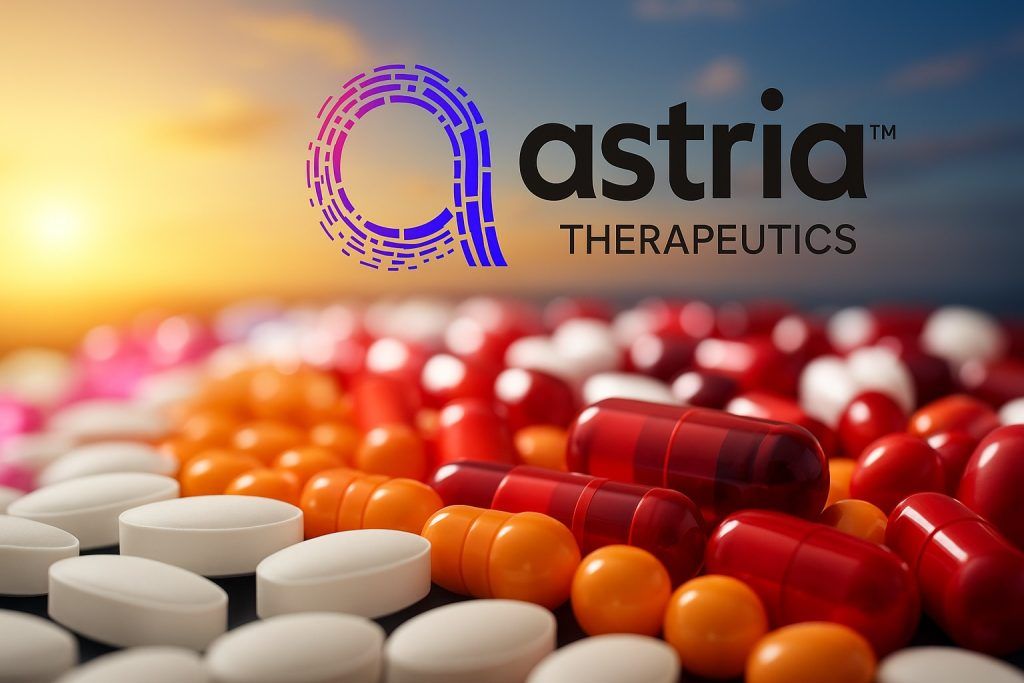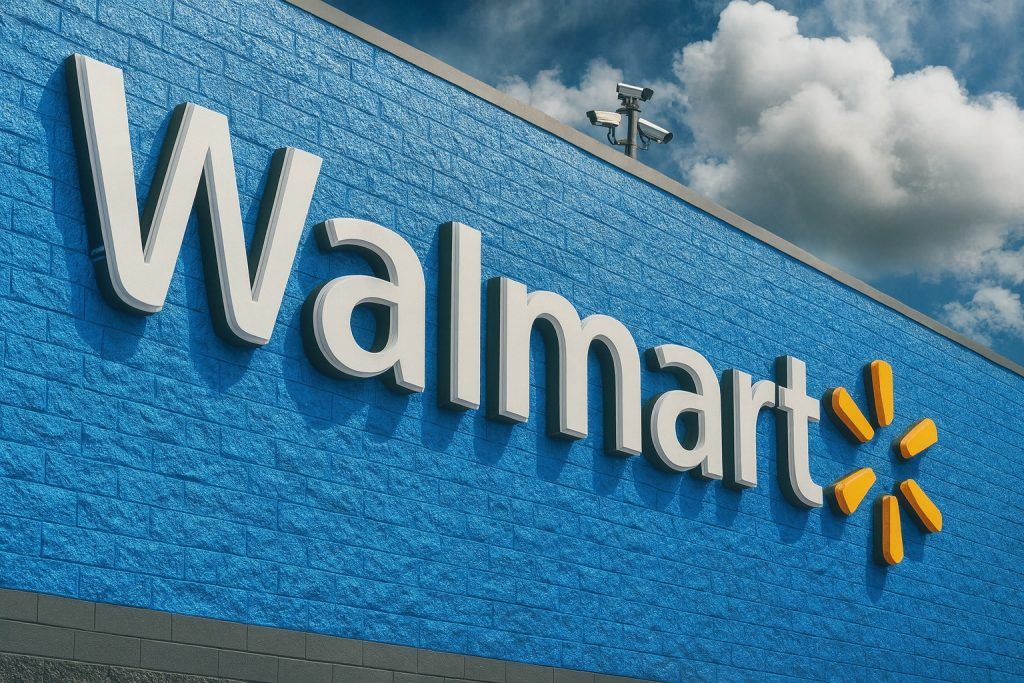- Stock Movement (Oct 2025): On Oct 14, 2025 Strata’s stock leaped ~63% in pre-market trading [1] after announcing a groundbreaking clinical case study. Prior to that, SSKN was down ~47% year-to-date [2]. As of the Oct 13 close, SSKN traded near $1.54 [3], but spiked into the mid-$2’s in extended hours [4] on the news. Trading volume on Oct 14 exploded (~45.6M shares vs. ~6M average [5]).
- Latest News: In mid-Oct 2025 Strata unveiled its first English-language case study showing its XTRAC excimer laser nearly cleared lesions of a rare skin lymphoma (poikilodermatous mycosis fungoides) [6]. Recent months have also brought positive peer-reviewed results for using XTRAC plus other therapies in psoriasis, vitiligo, and eczema [7] [8].
- Product & Business: Strata is a dermatology-tech company whose flagship XTRAC® excimer laser delivers targeted UV light to treat skin disorders. It also offers VTRAC® light systems and TheraClear® acne devices [9] [10]. The company uses a unique fee-per-treatment partnership model (doctors pay per patient treatment rather than buying equipment) [11]. CEO Dr. Dolev Rafaeli leads the company, with notable dermatology experts (e.g. Dr. Mark Lebwohl) endorsing XTRAC’s use in conditions like psoriasis and eczema [12].
- Financials & Valuation: SSKN’s market cap is modest (enterprise value <$20M) and revenue (~$33.6M in latest 12 months) is overshadowed by operating losses (negative margins) [13] [14]. Analysts’ consensus is mixed: MarketBeat shows 1 Buy/1 Sell (“Hold”) with an average 12-month price target ~$6 (implying ~290% upside) [15]. TipRanks notes a “Moderate Buy” consensus (1 Buy, 1 Sell) with a target around $3 [16].
- Outlook: Short-term, the stock is highly volatile on news flow. Medium-term catalysts include expanded insurance reimbursement (new CPT codes for all inflammatory skin conditions effective Jan 1, 2026 [17] [18]) and further clinical adoption. Long-term, success hinges on capturing more of the psoriasis/vitiligo market and defending its IP. Risks include NASDAQ compliance issues (equity below requirement as of Aug 2025 [19]), capital needs (recent $2.42M stock offering [20]), and competition from drugs and other devices.
Strata’s XTRAC® excimer laser (pictured above) is a targeted UVB therapy device used to treat localized skin conditions like psoriasis, vitiligo, and eczema [21] [22]. By customizing UV dose to each patient’s lesion, XTRAC spares healthy skin and enables precision treatment (often via a fee-per-treatment partnership model rather than equipment sales) [23] [24].
Company Background
STRATA Skin Sciences, Inc. is a medical tech company specializing in dermatologic treatments. Its core product is the XTRAC® 308nm Excimer Laser – a handheld UVB laser used in doctors’ offices to zap diseased skin with high-intensity, targeted light. XTRAC is FDA-cleared for conditions like psoriasis and vitiligo, and clinicians are increasingly using it “across an expanded array of skin conditions” [25] [26]. Strata also markets the VTRAC® lamp system and TheraClear® X acne device [27].
Rather than selling devices outright, Strata pioneered a partner clinic model: it installs the equipment at dermatology practices and charges a fee each time the clinic treats a patient with XTRAC or VTRAC. This aligns Strata’s revenue with patient volume. The strategy lowers the upfront cost for practices and gives Strata a stream of recurring income [28]. The company’s leadership team is headed by President/CEO Dr. Dolev Rafaeli, who often highlights clinical studies supporting XTRAC. For example, he notes that excimer laser therapy has been around 20+ years and is backed by “hundreds of publications,” strengthening the case for insurance reimbursement expansion [29]. Eminent dermatologists have endorsed the technology: Dr. Mark Lebwohl (Mount Sinai) calls XTRAC “one of our most effective treatments for localized eczema” [30], and many clinical advisors collaborate on research.
Financially, Strata is still small and unprofitable. Latest financial reports show roughly $30–$35 million in annual revenue but significant losses (negative EBIT/margins) [31]. The company carried substantial debt-to-equity and relies on raising capital; it recently closed a $2.42 million stock offering in September 2025 (1.098M shares at $2.204) for working capital [32]. Management underscores the need to scale partnerships and expand therapy indications to drive future growth. In August 2025 the SEC 10-Q revealed Strata’s stockholders’ equity fell below NASDAQ’s $2.5M requirement, triggering a compliance notice and a 45-day window (until Oct 3, 2025) to submit a recovery plan [33] [34]. This highlights that, despite clinical promise, the company is still navigating financial and regulatory hurdles as a micro-cap.
Recent News & Developments
In the past weeks Strata has been in the spotlight due to several positive clinical news releases – which in turn have driven volatile stock swings. Key developments (Oct 2025 and late Sep 2025) include:
- Oct 14, 2025 – Excimer Case Study in Cutaneous Lymphoma: Strata and its research partners published the first English-language case report of XTRAC treating poikilodermatous mycosis fungoides (pMF), a rare form of skin T-cell lymphoma. In that report, a 50-year-old patient received five XTRAC sessions (1,250 mJ/cm²) plus topical steroids and showed “near-complete lesion resolution at three months” [35]. The announcement highlighted a 2023 systematic review (72 patients) finding ~73.6% complete response and low relapse rates with 308nm excimer therapy [36]. Management framed this as proof that XTRAC can be a “targeted alternative to whole-body phototherapy” for hard-to-treat skin cancers [37]. The news was picked up by outlets (TipRanks, Benzinga, Reuters) and helped trigger the Oct 14 pre-market jump.
- Sept 30, 2025 – Psoriasis Study (Tacrolimus Combo): A peer-reviewed study in Lasers in Medical Science showed that combining XTRAC with 0.1% tacrolimus cream achieved significantly better plaque psoriasis clearance than tacrolimus alone [38] [39]. Specifically, patients given both laser + ointment saw greater PASI score reductions (to mean 3.30 vs 5.23 for ointment alone, p<0.01) [40]. Strata’s CEO hailed the data: “This important new study highlights the relevance and scientific rigor behind our Excimer laser technology,” and said the results bolster Strata’s case to CMS for expanded reimbursement, noting “more than 400 clinical publications backing Excimer therapy” [41]. This release underscored Strata’s “personalized medicine” strategy and helped set the stage for investor interest.
- Sept 23, 2025 – Vitiligo Trial (JAK Combo): Strata sponsored an investigator-initiated RCT (251 patients) combining XTRAC with an oral JAK inhibitor to treat vitiligo. Results published in the Int. J. of Dermatology showed a 14.2% higher repigmentation rate after 52 weeks versus XTRAC alone [42]. The study reported 100% efficacy rate (defined threshold) and durable outcomes (96.5% stable pigmentation, 8.8% relapse at 1 year) [43]. In reaction, SSKN stock “surged ~40%” on Sep 23 [44]. Dr. Rafaeli commented that this large trial “highlights the continued interest in our Excimer laser technology, and the promise of combination therapy” [45]. He noted Strata is using the data to pursue expanded insurance coverage for vitiligo and psoriasis by 2026 [46]. Notably, management pointed out that XTRAC has 20+ years’ history and over 400 published studies, reinforcing its credibility [47].
- Oct 3, 2025 – Eczema Awareness Month: For Oct (atopic dermatitis) awareness, Strata issued a press release reminding the market that XTRAC is a validated treatment for localized eczema. The release quoted Dr. Rafaeli emphasizing that excimer remains “effective, safe and durable,” and that dozens of studies (e.g. Shroff 2016, Baltás 2006) show dramatic clearance rates (e.g. ~87% of severe hand-foot eczema cases went nearly clear) with XTRAC [48]. Dr. Rafaeli and top dermatologists (e.g. Dr. Lebwohl) underscored physicians’ advocacy for broader reimbursement of excimer therapy [49] [50]. This PR reinforced Strata’s narrative of growing demand; however, it had limited direct stock impact by itself.
- Sept 4, 2025 – Capital Raise: Strata announced the closing of a $2.42 million registered direct offering on Sept 4 [51]. The company sold ~1.098 million new shares at $2.204 each to accredited investors (gross proceeds), intending to use funds for working capital [52]. (For context, $2.204 was well above the late-Oct trading price, indicating Strata believed the share price was undervalued when setting that offering price.) This offering, widely reported by BioSpace and finance media, diluted existing shareholders but ensured continued operations.
- Sept 2, 2025 – Patent/IP Announcement: Strata affirmed that it holds strong intellectual property around XTRAC in combination therapies. An announcement (TheFly/TipRanks) detailed Strata’s patents on using XTRAC with JAK inhibitors and biologics, giving the company “broad protection and market exclusivity” [53]. Dr. Rafaeli highlighted that these patents will fend off “inferior technologies” and cited the pending litigation against competitor LaserOptek (expecting “very significant damages” and injunctions) as part of their strategy [54]. The release also noted Strata is actively seeking inclusion of all inflammatory and autoimmune skin conditions for excimer therapy in the Medicare fee schedule effective Jan 1, 2026 [55].
These developments together have kept Strata in the news and catalyzed stock moves. In particular, mid-October media coverage (TipRanks, Reuters, Investing.com, Benzinga) turned the pMF case study and earlier vitiligo trial into market-moving events.
Stock Performance and Expert Commentary
STRATA’s share price has been extremely volatile. Prior to the Oct 14 uptick, the stock was languishing near multi-year lows (around $1.40–$1.60 in early Oct). On Oct 14 pre-market it suddenly “rocketed higher” by about 63% [56], trading around $2.50. By mid-day Oct 14 (Tuesday), SSKN was near $2.00–$2.60 (exact close still pending as of this writing). TipRanks reports that on that Tuesday alone, over 45.6 million shares traded (vs. ~6 million average) [57]. The pre-market spike erased much of 2025’s earlier decline – SSKN had been down ~47% YTD before Oct 14 [58] – but the stock remains far below prior year levels. For example, as of Aug 2025, SSKN was trading above $4.00 (MarketBeat data shows the stock still ~+17% YTD as of Aug, then sliding back) before collapsing in Sept. [59] [60].
Analyst sentiment on SSKN is cautious. According to MarketBeat (using 2 recent ratings), the consensus is Hold: 1 Buy and 1 Sell, averaging a 12-month price target of $6.00 [61] (implying ~290% upside from the Oct 13 price). MarketBeat notes both analysts share the same $6 target [62]. By contrast, TipRanks (which cites the same two analysts) labels the consensus a “Moderate Buy” and calculates an average target around $3 [63] (roughly +18% upside). A retail platform (public.com) even reports 100% of its 1 analyst as a Strong Buy (no price given) [64], but with so few covers, these figures vary widely. In sum, Street estimates range from about $3 to $6, reflecting very different outlooks.
Some trading pundits have weighed in: StocksToTrade’s Tim Bohen published a blog post (Sep 23) noting the 40% rally on the vitiligo study and dubbing Strata’s “exciting” new therapies as key drivers [65] [66]. However, these are anecdotal commentary from trading sites, not formal research reports. We did not find major sell-side reports on SSKN in Oct 2025 aside from these summaries. It is worth noting that Strata remains a thinly traded penny stock with a low float, so its price can gap significantly on news (as we saw). By Oct 14’s pre-market, the implied intraday move (+59% according to MarketBeat [67]) suggests extreme volatility.
Quote: TipRanks’s Oct 14 newswire captured the mood: “Strata Skin Sciences stock was up 62.99% in pre-market trading on Tuesday” following the rare lymphoma case study [68]. Yet even after the surge, that article noted the stock “remained down 47.08% year-to-date” [69] – illustrating how long the stock has struggled. TipRanks also reported the wall street average rating as Moderate Buy (the one buy, one sell) [70].
Overall, experts we found stress caution. On the buy side, some highlight Strata’s pipeline potential and multi-year adoption of XTRAC. On the sell/hold side, analysts point to the company’s lack of profitability and regulatory risks (see below). No analyst quotes explicitly urge a trade here, but given the huge recent moves, many would likely wait for confirmation of sustained revenue gains before upgrading coverage.
Market Forecast and Outlook
Short-term (weeks): The immediate outlook depends on execution of ongoing projects. With the CMS plan submission due in early Oct and more studies coming, we expect continued volatility. If no new catalysts emerge, the stock might pull back from its Oct 14 highs (profit-taking after the 60% jump is common). Technical sites predict a trading range (one AI analysis gave a possible $1.42–$1.66 range on Oct 14) [71]. New developments could spark moves – for example, any news on Medicare (CMS) expanding excimer coverage, or the outcome of the LaserOptek patent lawsuit.
Medium-term (6–12 months): By 2026, two major catalysts loom. First, Strata is lobbying to include all inflammatory and autoimmune skin conditions under the expanded excimer laser reimbursement codes, set to take effect Jan 1, 2026 [72] [73]. If approved, this could greatly expand the number of patients eligible for covered XTRAC treatment. Second, ongoing clinic rollouts (its “Elevate 360” partnership network) could start showing revenue lift. Analysts at MarketBeat projecting ~$6/share implicitly assume these catalysts bear fruit [74]. However, achieving meaningful commercial adoption will take time; expect modest revenue growth in 2026 unless managed care changes come through.
Long-term (several years): Strata’s long-term story hinges on establishing XTRAC as a mainstay therapy and possibly licensing or acquiring complementary technologies. Its patent portfolio and successful litigation will determine how defensible its niche is. Dr. Rafaeli is vocal about the company’s IP: he stressed that strategic patents should deter “inferior technologies” and that Strata expects substantial damages from the LaserOptek case [75]. If Strata prevails legally and wins broad insurance coverage, it could dominate the excimer laser market; conversely, failing to regain Nasdaq compliance or continually needing dilutive funding would limit upside. Ultimately, if every rheumatology/dermatology patient with psoriasis or vitiligo gets easy excimer access, upside could be large. But that is a high bar – success likely depends on clinical momentum and supportive policies.
In numerical forecasts, caution is advised. The average sell-side target (~$6 [76]) is very optimistic and may reflect low current share price. Street targets may be set on hopes of full CPT expansion. In contrast, just one or two strong trial results might not by themselves move the fundamentals much. Investors should monitor upcoming milestones: FDA (if any new approvals), CMS announcements (likely late 2025), and quarterly reports.
Risks and Opportunities
Opportunities:
- Expanded Reimbursement: The biggest bull catalyst is insurance coverage. With a new category of CPT codes launching Jan 2026, Strata hopes all inflammatory skin diseases will be covered [77]. Management calls for “expanding into new indications, maximizing revenue opportunities” by leveraging their excimer IP [78]. If CMS grants broad coverage (for psoriasis, eczema, vitiligo, etc.), XTRAC treatments could see a surge in demand.
- Clinical Momentum: The string of positive studies (psoriasis, vitiligo, pMF, eczema) adds to >400 prior publications supporting XTRAC [79] [80]. Each successful trial and expert endorsement may encourage more dermatologists to adopt the therapy. In particular, combination approaches (laser + JAK, laser + steroid) may differentiate Strata from competitors who sell only drug or light therapy. If Strata’s strategy of “personalized” combination treatments gains traction, patient numbers and clinic partnerships could grow significantly.
- IP/Exclusivity: Strata’s patent portfolio (as announced Sept 2) reportedly provides exclusivity on using XTRAC with JAKs/biologics [81]. This could deter rivals from copying Strata’s novel combination approach and possibly allow premium pricing. A strong legal win in the LaserOptek suit could not only award damages but also establish enforceable precedent, further protecting market share.
- Partnership Network: Strata’s Elevate 360 network is expanding (Strata claimed hundreds of partner clinics in past releases). As more dermatology groups join, Strata’s recurring fee revenue should grow. Successful marketing and patient co-pay assistance (they mention co-op advertising support in their model [82]) can help scale usage.
Risks:
- Financial Strain: As of mid-2025, Strata’s stockholders’ equity was below NASDAQ’s $2.5M requirement [83]. The company must file a compliance plan (due Oct 3, 2025) to avoid delisting [84]. This underscores its fragile balance sheet. Strata has already resorted to equity raises (the Sept $2.42M deal [85]) to stay afloat. If clinical adoption lags or reimbursement is delayed, Strata could need additional funding, diluting shareholders further or risking bankruptcy.
- No Assured Coverage: While management is lobbying CMS, there is no guarantee that expanded codes will be granted beyond existing indications. Payers may demand extensive proof of cost-effectiveness. If CMS or major insurers balk at broad excimer coverage, Strata’s growth could stall. The company itself warns investors that outcomes of these efforts are uncertain [86].
- Competition: The main alternative to XTRAC for many conditions is systemic or topical drugs (steroids, biologics, JAK inhibitors). These pharmaceuticals have massive marketing and prescribing momentum. Strata’s therapy is generally an “in-office” procedure requiring multiple visits – potentially less convenient than a daily pill. If new prescription drugs (e.g. novel JAKs or biologics) capture market share, the need for excimer could shrink. Also, competing devices may emerge. Although Strata’s patents cover combination uses, rivals might compete on price or focus on single therapies.
- Trial Setbacks: Some fear exists that if a high-profile study falters, enthusiasm could wane. For example, if the current LaserOptek trial (yet another excimer device maker) yields conflicting claims, it might confuse physicians. The risk is mitigated if Strata wins its patent case, but any negative headlines or litigation costs could impact resources.
- Volatility and Liquidity: SSKN is a micro-cap penny stock. Its share price can move dramatically on rumors or small trades (as seen on Oct 14). Retail investors should be prepared for wild swings – technical analysis sites rate it “very high risk” due to volatility [87]. Low free float means any large shareholder selling could depress the price. The extreme moves on positive news suggest the stock may be prone to equal sell-offs on any disappointment.
In summary, Strata Skin Sciences has begun to dominate headlines with positive clinical data in Fall 2025. Its opportunity lies in translating those studies into more sales and insurance coverage, which could drive outsized gains if achieved. However, significant risks remain in funding, insurance adoption, and competitive pressures. Investors should weigh the potential for a big payoff (consensus targets as high as ~$6 [88]) against the reality of operating losses, dilution, and regulatory uncertainty.
Sources: Company press releases and investor materials [89] [90] [91] [92]; news coverage by TipRanks/Investing.com/MarketBeat (cited above); NASDAQ and SEC filings [93]. All information is current as of Oct 14, 2025.
References
1. www.tipranks.com, 2. www.tipranks.com, 3. www.marketbeat.com, 4. www.marketbeat.com, 5. www.tipranks.com, 6. www.stocktitan.net, 7. www.biospace.com, 8. www.investing.com, 9. www.globenewswire.com, 10. www.biospace.com, 11. www.globenewswire.com, 12. www.globenewswire.com, 13. stockstotrade.com, 14. www.biospace.com, 15. www.marketbeat.com, 16. www.tipranks.com, 17. www.tipranks.com, 18. www.investing.com, 19. www.sec.gov, 20. www.biospace.com, 21. www.biospace.com, 22. www.globenewswire.com, 23. www.globenewswire.com, 24. www.biospace.com, 25. www.globenewswire.com, 26. www.investing.com, 27. www.globenewswire.com, 28. www.globenewswire.com, 29. www.globenewswire.com, 30. www.globenewswire.com, 31. stockstotrade.com, 32. www.biospace.com, 33. www.sec.gov, 34. www.sec.gov, 35. www.stocktitan.net, 36. www.stocktitan.net, 37. www.stocktitan.net, 38. www.biospace.com, 39. www.biospace.com, 40. www.biospace.com, 41. www.biospace.com, 42. www.investing.com, 43. www.investing.com, 44. www.investing.com, 45. www.investing.com, 46. www.investing.com, 47. www.investing.com, 48. www.globenewswire.com, 49. www.globenewswire.com, 50. www.globenewswire.com, 51. www.biospace.com, 52. www.biospace.com, 53. www.tipranks.com, 54. www.tipranks.com, 55. www.tipranks.com, 56. www.tipranks.com, 57. www.tipranks.com, 58. www.tipranks.com, 59. www.tipranks.com, 60. www.marketbeat.com, 61. www.marketbeat.com, 62. www.marketbeat.com, 63. www.tipranks.com, 64. public.com, 65. stockstotrade.com, 66. stockstotrade.com, 67. www.marketbeat.com, 68. www.tipranks.com, 69. www.tipranks.com, 70. www.tipranks.com, 71. stockinvest.us, 72. www.tipranks.com, 73. www.investing.com, 74. www.marketbeat.com, 75. www.tipranks.com, 76. www.marketbeat.com, 77. www.tipranks.com, 78. www.tipranks.com, 79. www.biospace.com, 80. www.investing.com, 81. www.tipranks.com, 82. www.globenewswire.com, 83. www.sec.gov, 84. www.sec.gov, 85. www.biospace.com, 86. www.tipranks.com, 87. stockinvest.us, 88. www.marketbeat.com, 89. www.biospace.com, 90. www.globenewswire.com, 91. www.stocktitan.net, 92. www.investing.com, 93. www.sec.gov
